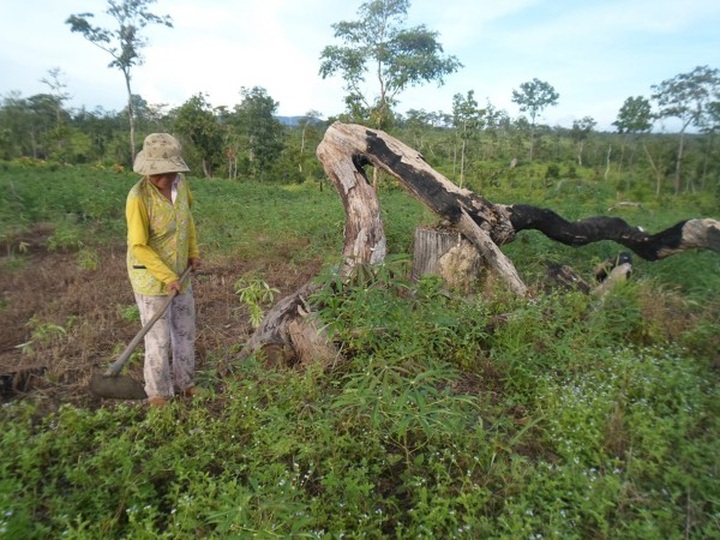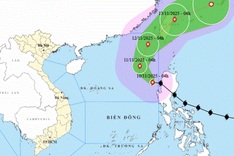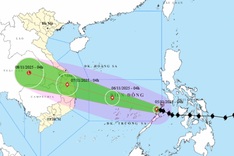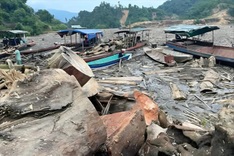Large swaths of forestland in the central highlands have been allocated to enterprises for management, but recently a number wrongdoings and violations have come to light, calling into question the wisdom of this policy.
Nearly one million hectares of forestland have been handed over to 56 forest management companies, many of which have been ineffective in the use and management of forests. Meanwhile, local residents lack land for cultivation. This paradox was pointed out a decade ago, but not much has been done to rectify the situation.

Poor people in central highlands use forestland for agriculture
Recently, Truong Xuan Forest Management Company was found to have lost 4,500 out of the total 6,200 hectares of forestland it was allocated for management in Dak Nong Province. Provincial authorities said they have got sufficient evidence to bring the case to court, but this would not solve the larger problem, as it is not a unique case in the region.
It is estimated that in last decade, over 27,600 hectares of forest area in the province was chopped down or illegally appropriated. In the entire highlands region, about 90,000 hectares under the management of these companies has been destroyed. The government is also finding it difficult to reclaim this land.
In Dak Lak Province, over 26,400 hectares of forest has been destroyed since 2008 and less than 2,000 hectares of the land has been reclaimed. Of the destroyed forest area in the province, 7,000 hectares were under the management of Chu Ma Lanh Forest Management Company.
Outlining the heart of the problem, Y Krak, a man from Chu Ma Lanh Commune, said, “Almost all forestland in Ea Sup District is managed by companies, and we wouldn't be able to subsist if we did not appropriate it ourselves."
Many forest companies attribute the situation to a lack of human resources and funding, as well as lax management by local authorities. In fact, however, these management companies often lease out the land to other companies who did not relinquish use after the terms of contracts were over.
In Dak Nong province, for example, three private companies appropriated a combined 857 hectares of forestland used as rubber plantations managed by Quang Tinh Forest Company, along with 1,200 hectares of natural forests.
In order create a more equitable way of sharing the benefits of these forest areas between local residents and management companies, the government issued a decree on the issue, giving certain rights to parties who use the land for forest cultivation. However, forest management companies were not transparent in the process.
As a result, many households that received land from forest companies have used it for agriculture instead, clearing the forest instead of cultivating it.
In Dak Nong Province, 2,670 hectares of forestland was allocated to 367 households, 1,960 hectares of which was destroyed.




















